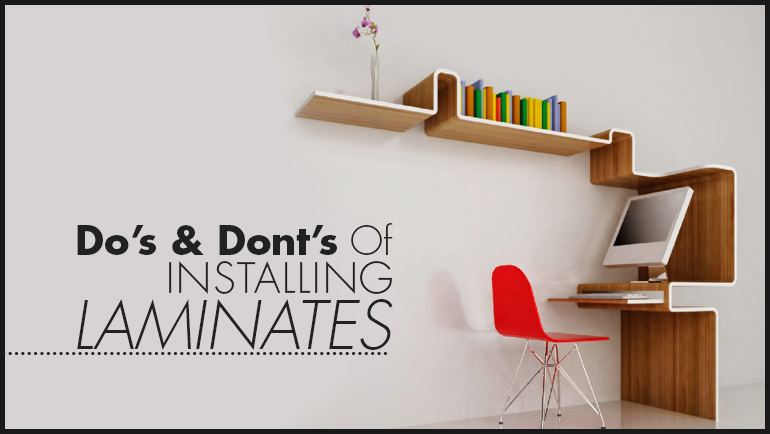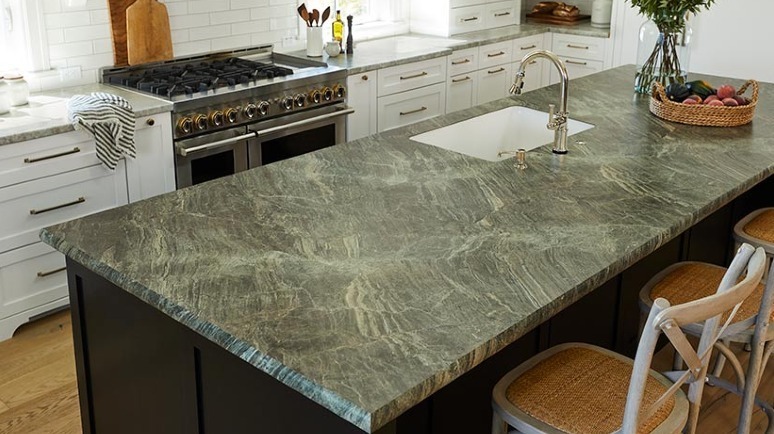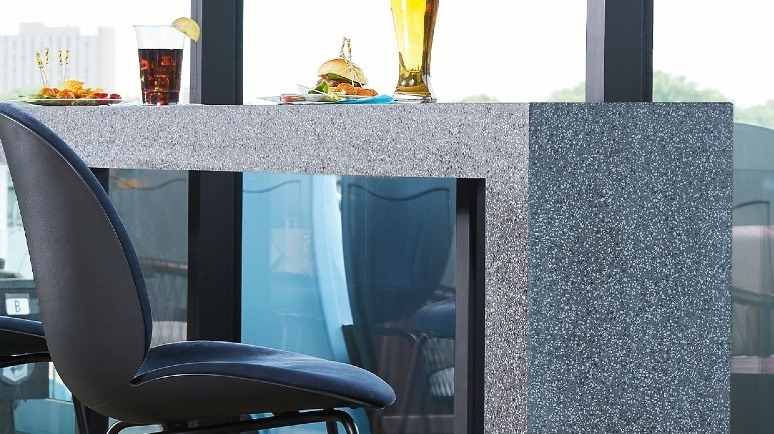
Why are laminates the most-demanded product of the surfacing industry?
April 6, 2017
HOW TO INSTALL LAMINATES FOR KITCHEN CABINETS ALL BY YOURSELF
April 25, 2017High Pressure Laminates are the most commonly used surfacing material in urban living spaces. Finding their uses in domestic as well as commercial applications, laminate sheets have outperformed their competitors like hardwood, granite, composite stone etc. by a huge margin. Some qualities that make High Pressure laminates stand out from the rest are their low maintenance and easy installation.
Although it is often recommended to use professional help and guidance when installing laminate sheets, it is also true that with a little practice, regular or designer laminates can easily be installed on surfaces like furniture, table tops and even walls by simple Do-it-Yourself techniques.
Here are some things that you may want to bear in mind while installing decorative laminates yourself, or while supervising a professional at home.
The Do’s of High Pressure Laminate Installation
- Carefully consider the area of laminate sheets installation.
While installing decorative laminates, it is of utmost importance to consider the extent of external environmental distress. In simpler words, always keep in mind the possibility of dust and scratches, mechanical abrasion and also factors like moisture. Especially, when it comes to water, some designer laminates may be water repellent, but it is always advisable to keep them dry and away from moisture. A common occurrence besides external spillage is the seepage from walls and floors in the kitchen and bathroom areas.
- High-Quality Waterproofing
When using high pressure laminates for flooring, walls, door and table tops, it is important to have effective waterproofing in place. It is advisable to use High-quality waterproofing material during construction of your house, which protects the subfloor from moisture coming from the earth. This moisture, when not given the correct outlet to escape, may accumulate and cause damage over time. Even when laminate sheets are long-lasting, they are generally affected by the presence of moisture,
- All decorative laminates are different
The general rules of application and installation apply to all decorative laminates, but when it comes to finding the most effective technique for your designer laminate, it is important to read the laminate sheets installation instruction manual for that specific laminate. Laminate manufacturers in India use various techniques to make their products stand out. For instance, you may come across laminate sheets that are dust-resistant; some may be bacteria resistant or may even be able to stand the deteriorative action by mild chemicals. These may come with a specific set of slightly different properties which may have to be taken into account during installation of designer laminates.
- Temperature plays a huge role
High Pressure Laminates are bad conductors of heat, which is to say, generally speaking, laminate sheets do not expand or contract too much with the effect of heat. However, it would also be incorrect to say that decorative laminates do not expand or contract at all. Therefore, it is important to bear in mind the floor temperature may affect the settling capability of the designer laminate, so it is crucial to let the floor acclimatise for at least 48 hours after being laid out. The same goes for cemented table tops and kitchen slabs too. Also, it is advisable to leave a gap of 10 mm at the perimeter to give the laminate sheet planks plenty of room to expand on exposure to heat.
Here are some Don’ts of High Pressure Laminate Installation
- The first row of laminate sheets should be perfect
The first row of decorative laminates that is laid out has to be in a straight line. It is the basis of entire floor plan. If the first row of decorative laminates is flawed, or has obvious aberrations, it would lead to an erroneous layout which may have to be entirely re-done. It is easy to correct the first mistake than accumulate it over time to re-do the entire installation.
- Soap and Mop
Generally speaking it is unadvisable to use strong soaps or detergents to clean the surface of laminate sheets.




